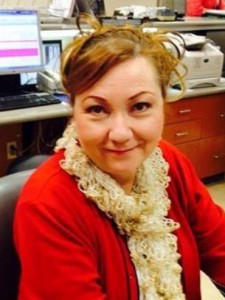
I recently had the opportunity to interview LeNae Peavey-Onstad, a Mormon woman and hospital chaplain. LeNae is the person who introduced me to the Exponent five years ago, so I am forever grateful to her. She was recently endorsed by the Church of Jesus Christ of Latter-day Saints (LDS) as a chaplain—twenty-five years after she first sought such an endorsement in 1990 and eight years after beginning full-time work in the profession.
Why did you choose to become a chaplain?
In 1988, I was working at St. Mark’s Hospital as registrar and switchboard operator. I became familiar with the pastoral care program for Clinical Pastoral Education (ACPE) since I called in the chaplains at night and on the weekends for deaths and crises. I came to understand the diverse religious affiliations of these chaplains and how they are trained to be ecumenical and sensitive to all faiths and cultures. My interest increased over time to the point that I felt that I needed to be the one responding to such crises. I found myself concerned for those involved in the life-changing circumstances they were facing.
I enrolled in my unit of Clinical Pastoral Education in 1989. The enrollment process was rigorous, requiring many interviews and recommendations. It was during this time that an LDS chaplain at Veteran Affairs (VA) encouraged me to follow this path. He told me he was endorsed by the LDS church as required by the VA. However, he had never served in the Armed Forces.
When did you first attempt to become endorsed by the LDS Church for chaplaincy?
Realizing that this career path would require the highest level of education—higher than a master’s degree—I became serious about finishing my Bachelor’s and moving through the process. There was a glitch because with all of this education and cost looming ahead, I would also need an endorsement to be hired. I contacted the LDS church to make sure that this was possible.
The church had no department for hospital chaplains so I was left to sort it out. My first letter was sent to Marion D. Hanks in early June 1990 asking about endorsement or permission from the LDS church to work as a paid chaplain in a hospital with their blessing. He wrote back on June 19, 1990, stating that the church does not have a commission to work in this type of setting. He referred me to Dr. Harold Brown in the Social Services Department.
In the meantime, I had inquired of my bishop about a letter of reference. He referred me to the Stake President who inquired of the church about such a letter. The Stake President told me that he had received a letter from Church Headquarters telling him that he was not to write me a recommendation letter of any sort.
On November 21, 1990 I received a letter from F. Michael Watson on behalf of the First Presidency and Military Relations Committee including the Utah Central Area Presidency. I was commended for my desire to serve but the letter stated that it was not possible for the Church to provide ecclesiastical endorsement to hospital chaplains. They said that those who are hospitalized can most often have their needs met by their own priesthood leaders or priesthood leaders in the local area.
How did you accomplish the goal of becoming a chaplain and being endorsed for your work by the Church?
I prayed about the issue and felt strongly encouraged to continue to process and the “doors would open.” I met an LDS woman named Kathryn in California who was working at Stanford Medical Center in the process of taking her Clinical Pastoral Education. She said she had also met with the church military chaplain division and often stopped by to see if there were any developments.
I had moved to the South and visits to Church Headquarters were not possible for me. I continued to raise four children and complete the schooling. Around 1999, during a visit to Salt Lake, I stopped by the military chaplaincy offices of the church and spoke with Frank Clawson. He was kind. I informed him that I was seeking endorsement and pursuing the degrees to become a chaplain.
I moved to Salt Lake City in 2008 for a full time chaplain job after completing my Bachelor’s degree and a Master’s degree at Oblate School of Theology in San Antonio, Texas in 2004. I had also completed four total units of ACPE while completing the Master’s degree.
That same year I again made an appointment with Frank Clawson and informed him that I was now working at Pioneer Valley Hospital as the chaplain. Again, I was told that only service members who are chaplains can be endorsed. He informed me that he was aware of Kathryn and others were now coming forward seeking endorsement. He indicated that the leadership was not ready to make a decision regarding endorsement.
In 2014, there was a news article saying that the church was considering endorsement of hospital chaplains but I didn’t see it. I was told about it by someone who had read the article nearly nine months after the announcement. Since the church did not actively try to keep track of the people who were approaching them about endorsement, no letters went out to those individuals. I met with my current bishop about endorsement. The process took approximately eight months due to lost paperwork and communication problems with leaders. I finally received my endorsement letter on November 3, 2015.
What are the barriers to chaplaincy for LDS women?
The most difficult part for me to understand was that the LDS Church appeared to see themselves as the only valued faith in the area. They thought they could use the LDS leadership and visitation roles as a substitute for pastoral care needed by hospital populations that included members of many faiths and people without any faith at all.
This frustrated me in particular during my training, when a gentleman who was dying informed me that he had long ago dismissed the LDS church. No one from the church had come around to support him in many years, and yet, he was ready to come home. It was the chaplain who made that connection for him and provided that support during his darkest hour. The church accepted him back with open arms, but without the gentle trust and support of the chaplain, he may not have softened enough to grieve the losses in his life and accept what he needed.
Due to the structure of the LDS church, I felt that my desires and gifts were overlooked due to my gender. This is not to say I did not receive support and encouragement from my leaders, but when it came to my desires to step outside the expected box, I felt I was not taken seriously. Other women I have been in contact with over the years have felt the same way.
It has been a much harder road to walk as a female chaplain among members of my own faith than among members of any other faith that I have encountered in the nine years of working as a full-time paid chaplain. I find that I often have to prove my value and skills to LDS families. The terms are unfamiliar as are the patient advocacy roles we play in the hospitals and hospices. I must work harder and I must be better at what I do to earn respect. Patient by patient, I am educating the public about the skills and virtues of the chaplain.
Women have often been harsher with me than men. Women are used to seeing men in leadership and spiritual roles. It is unfamiliar for them to see women offering spiritual care in hospitals. Often, male chaplains are respected as priesthood leaders even when it is unclear what their faith orientation is.
Jointly, couples and families sometimes excuse the chaplain under the guise that the bishop is involved. They are reluctant to discuss their spirituality and fears with a stranger. Those that do are surprised at the amount of support, education and spiritual care a chaplain of any faith or gender will provide.
The biggest obstacle to women wishing to be chaplains who are raised in the Utah area is their limited exposure to other faiths and cultures. The killer of non-judgmental support to patients is a lack of this knowledge and understanding.
Do you have any advice for other LDS women who may be interested in chaplaincy?
I encourage all women wishing to become hospital chaplains to pursue the highest quality of education possible. Jump through the hoops to get into the best programs and finish Master’s Degrees at accredited institutions. The Clinical Pastoral Education program you choose can severely limit your ability to be employed in many places. Look at chaplain jobs in the Bible belt, look at their educational requirements and pursue those. As women seek out the best education, not only will the quality of female chaplains increase, but also their ability to be hired in the best paying jobs, move up into management and gain respect of colleagues. If you want to work in a hospital, apply early and get into a ACPE training institution; do not accept anything less. Travel out of state to get that training if necessary.
If your only desire is to ever work in hospice, there are programs out there for that. We should not confuse that experience or education as something the crisis and trauma of a busy emergency room in a hospital would prepare you for. The educational requirements are entirely different. Consider your skills, desires and spiritual gifts. I would be happy to answer questions.


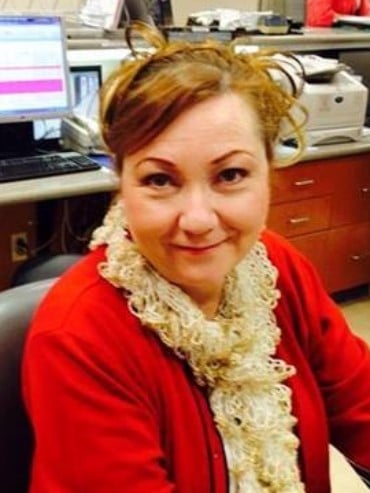
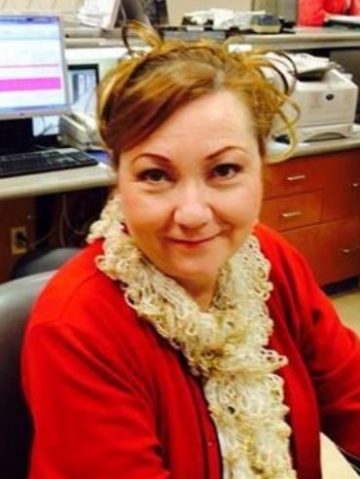
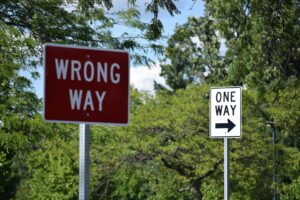
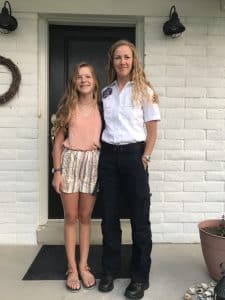
31 Responses
Thank you so much LeNae for sharing your story. This part in particular stood out to me:
Women have often been harsher with me than men. Women are used to seeing men in leadership and spiritual roles. It is unfamiliar for them to see women offering spiritual care in hospitals. Often, male chaplains are respected as priesthood leaders even when it is unclear what their faith orientation is.
In the autobiography of Dr. Elizabeth Blackwell, the first American female physician, she said something similar about how women, in particular, seemed to be more biased against women in the medical profession. I can only imagine how this is exacerbated in a spiritual role like yours in a predominantly Mormon community, since priesthood is so conflated with maleness in our culture. As you pointed out, even non-Mormon men are presumed to be Mormon priesthood leaders and treated as such just by virtue of their gender, while a woman’s spiritual leadership may be discounted, regardless of her religious affiliation.
Thank you for sharing my story April!!!!!
Hi LeNae! I just learned about you! Maybe I could become a chaplain too! What all is involved, in your experience, as a female chaplain?
I’m so interested in this! I’m seriously considering going back to grad school for this (there’s a new program at Claremont!)
I have a few questions:
Is the church now willing to endorse female chaplains in general (assuming they pass a bishop and stake president’s approval?) or did the church make special exception for you? Do you think they are likely to accept others from now on, or did it seem like a special case?
And, are Mormon military chaplains exclusively male? Everything on the church website about Mormon military chaplains was very male specific. There’s also a chaplaincy program at BYU, do you think they’d accept a female applicant?
Did you have to jump through any other hoops at the time of your schooling and employment since your own faith wouldn’t endorse you? Did you have to find an endorsement elsewhere?
The church will endorse female chaplains but they have conditions and requirements. Also, the masters program ay BYU only accepts men. I had to peruse my degree out of state at a Catholic institution. Many people think that they can become a chaplain by merely being a good church member or returned missionary. The education is masters level and beyond. It takes commitment. The church does not endorse military chaplains because if v the need for priesthood on the battlefield.
I spoke with the director of the program at BYU when I was considering finishing up some class requirements that were not met by my Masters in Theological Studies. He told me I was welcome to apply and they would work with me to get the coursework I needed.
Thanks for sharing this. I admire your persistence in the face of institutional resistance and indifference!
I wish I had known that career paths like this were possible years ago, before I got so deep into student loan debt going down a different, and not truly fulfilling career path. It never occurred to me to wonder where chaplains came from and who could be qualified to hold those positions. I just wish I had known.
I guess opportunities come and go in life. It took me too long after my mission to realize that the most rewarding part of it had been the pastoral elements, and then I spent too long thinking that those kinds of doors weren’t open to me as a Mormon woman. I guess I’ll have to chalk it up as one of the great regrets of my life and move on from there.
But thank you for sharing your story. I’m so happy to know that the Church has endorsed a female chaplain. That’s just fantastic.
I never seriously considered a military career, but I had conversation with an army recruiter once about 15 years ago. He said I could do anything in the army EXCEPT be a chaplain, as a Mormon woman. You had to be a priesthood holder for the LDS church to endorse you for that position. (I could be a chaplain’s assistant, however. No problem. It’s just a lower rank and lower pay, but the church will endorse a woman for that!)
So I’m wondering the same thing as someone else above. Is the church now willing to endorse an active LDS woman as a military chaplain, or is that still off limits? I read a fascinating book written by a female chaplain (obviously of another faith) who deployed to Iraq. It made me sad, realizing no Mormon woman would ever be allowed to do the same thing. Has that changed? That would be wonderful!
PS. Part of the reason I was given was that a Mormon female chaplain couldn’t give a blessing. But now we’re all talking about how Mormon women used to give blessings by the power of faith, so….couldn’t a female chaplain do that?
As a current Church-endorsed Army chaplain, I can say that the Church is not endorsing women for military chaplaincy at this time. I believe the current position has to do with the lack of priesthood. Perhaps will change in time – one can hope!!! However, as this interview notes, the Church will endorse qualified women and men for positions in civilian healthcare and related chaplain positions.
Jason, you are wrong. As is this article. There are about a dozen LDS endorsed women chaplains. I know, I am one, and I have my endorsement since the process began nearly four years ago. I have been a chaplain for ten years. Blessings, Ronda
Ronda, the article states I was endorsed in 2016
Hi, did you complete your masters education and CPE online? You mentioned it was out of state.
Oh, I love so much that she was endorsed, as well as her persistence and determination in going forward with what she felt called to do. So inspiring.
Sorry about the typo’s!!!!
Way to go LeNae! I love it that the church finally endorsed you. I remember you being worried about that issue when you were in school. How wonderful!
Women in this career field are essential and unique. They have insights into people and can read between the lines, something that comes with female perceptive and natural instincts.
I think there is great value in chaplaincy programs, and even more so after reading about the rigorous requirements for training and education. As much good as the LDS church does, it is a lay ministry. People do their best, but they are unpaid volunteers, often without the specific training that would make a person effective in a specialized role such as this. Additionally, the role of advocate for a hospitalized patient cannot be overstated. I work as a registered nurse in a pediatric ICU in a large metropolitan area hospital. The two chaplains that most often work with my patient population are both women, are an integral part of the family centered care team, and have developed relationships of trust within the health care team (nurses, physicians [intensivists and specialty consults], social workers, nurse practitioners, therapists [respiratory, physical, occupational, speech], child life specialists, nutritionists, pharmacists, etc.). I won’t comment on how their gender affects their ability to provide pastoral care, but I will emphatically state that having professional chaplains is a necessary part of healthcare best practices.
LeNae, thank you so much for your trailblazing. The path of a Mormon woman chaplain is a lonely and expensive one (on many fronts) and one that I found too many barriers to continue. But, I am so grateful for your courage and for telling your story here.
Emily, I am in debt 40,000. I was divorced after this process and my ex thought he would inherit the education debt. I wouldn’t do that but now that I am on my own I wouldn’t change the struggle. Amazing things hsllen every day. Good luck in your persuits.
Congratulations!
As time passes, the notion that hospital chaplains must be clergy is fading, especially as chaplains are expected to serve on a non-denominational basis. Some hospital chaplains are clergy, of course, but some (more as time passes) are not. Where a hospital or other institution allows for non-clergy chaplains, lay persons may perform that role. Each hospital or other institution makes its own rules.
For the U.S. military, the expectation is that LDS chaplains be clergy. For that reason, only priesthood holders are endorsed as military chaplains.
It must be wonderful to have a job that one really enjoys. Best wishes.
I am currently completing my MDiv at Liberty University — I live in San Antonio, and my intent was always to be a hospice chaplain — however here, most top hospices are very strict with their requirements too and require an MDiv. – prefer some ACPE, but I was wondering about endorsement etc. from the church and wondered how difficult that was in case some companies expect “ordination” and an endorsing agent. However, Liberty has now been serving as an endorsing agent for some students, so I will just have to see where the road leads. I have 25 years of leadership experience in senior healthcare, and an M.S. in community services (almost like social work), and was desiring this for a pre-retirement position… It has been a journey that’s for sure. Thank you for forging the way…
Continue your journey. The door will open as they did for me.
Hi, did you complete your masters education and CPE online? You mentioned it was out of state.
According to the new church General Handbook section 38.10.7 t Church will now endorse female military chaplains.
Taylor, at least since 2016 when I was endorsed. That is when this article was written.